Theraputic Massage in Lake Atitlan Resort
Pamper yourself with a theraputic massage at Los Elementos Day Spa. Enjoy a massage with th...
Written by Lee Beal.
Discover the hidden treasures of Lake Atitlan. This blog outlines the 8 villages worth visiting and the top things to do there so you can plan an unforgettable vacation.
Lake Atitlan, or Lago de Atitlán, is a beautiful lake in Guatemala, famous for its deep blue waters, towering volcanos, and phenomenal natural beauty. It is a popular tourist destination, and for good reason. The lake is stunning, and there are many things to do in the area.
There are 11 charming villages situated around the lakeshore. You'll be surprised, but each village really does offer a unique perspective on Mayan culture.
Eight of the villages are notably more popular with tourists, and they are Panajachel, Santa Cruz, San Pedro, San Juan la Laguna, San Marcos, Santiago, Santa Catarina Palopó, and San Antonio Palopó.
Let's dive deeper and explore the best that each village has to offer the adventurous traveler.
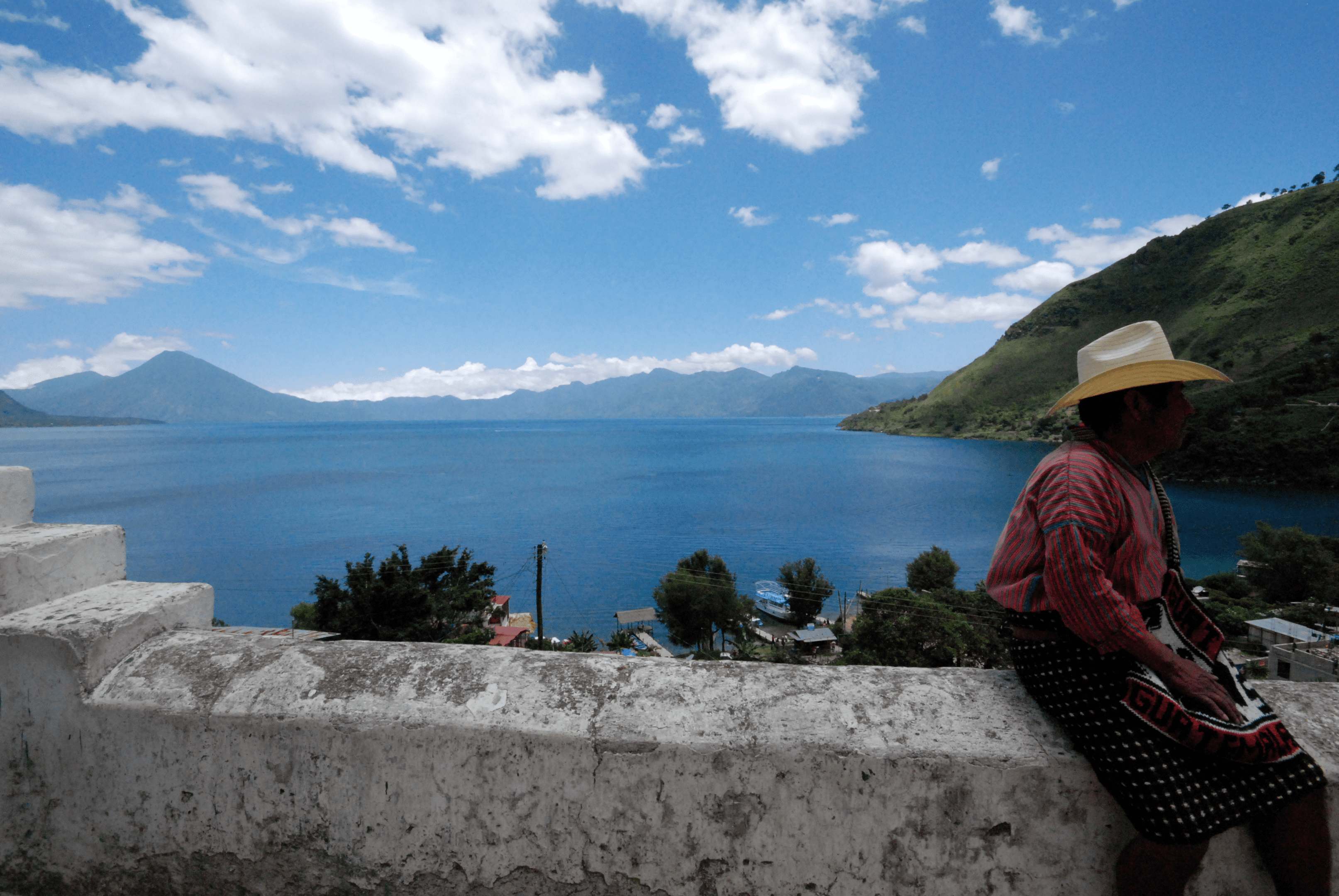
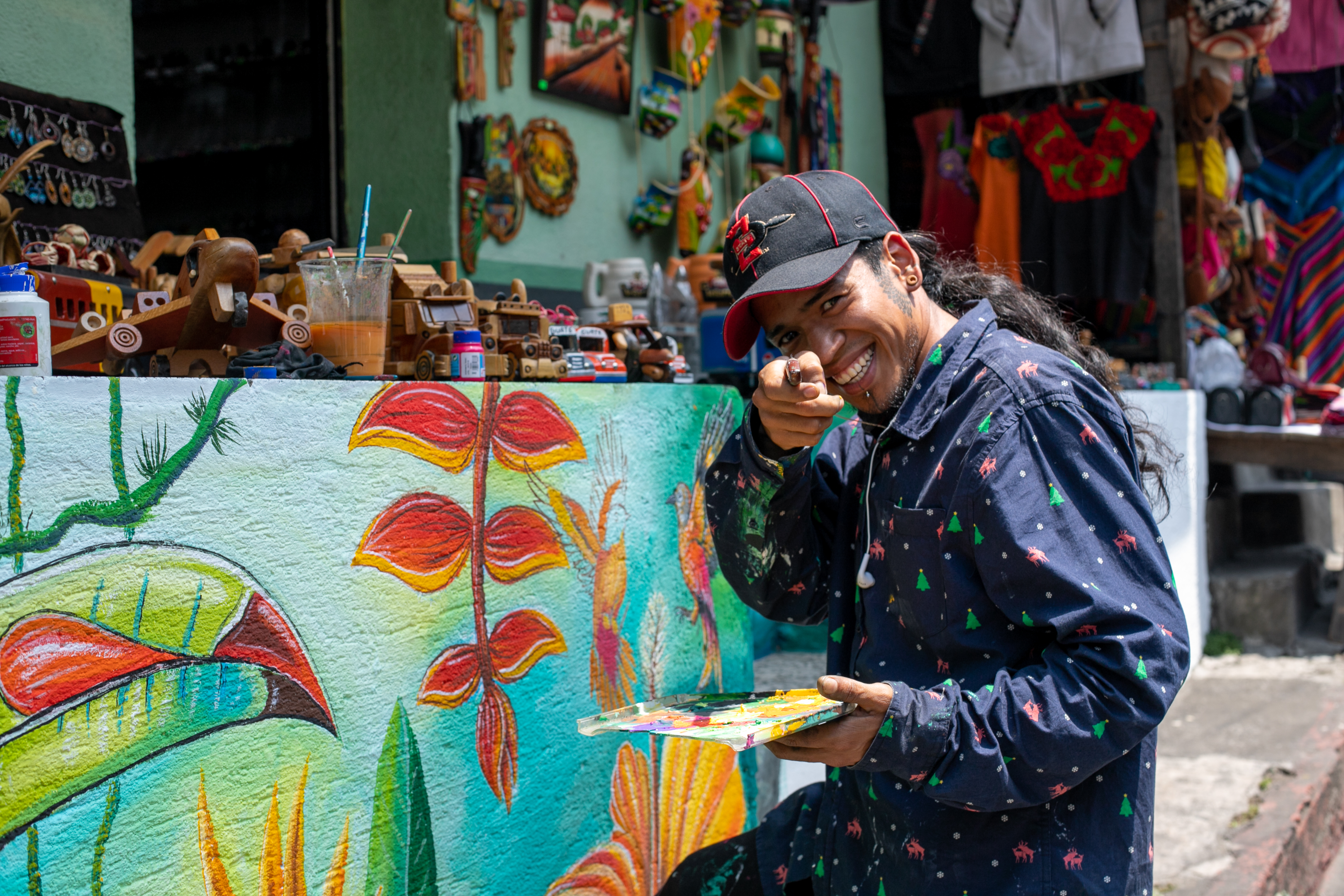
Panajachel is the gateway to Lake Atitlan, as it is the closest destination to Antigua and Guatemala City. Of all the Lake Atitlan towns, Panajachel feels similar to thousands of other tourist destinations around the world.
It has an interesting pre and post-colonial history. Being one of the few places around Lake Atitlan with flat land, it was first settled by people thousands of years ago. The abundant fishing and hunting were attractive to people migrating from the north. Those people eventually became the Kachiquel Mayan who still populate the north and east shores of Lake Atitlan.
The town's streets are lined with charming shops, cafes, restaurants, and bars, catering to the diverse tastes of its visitors. Whether you're looking for authentic Guatemalan cuisine or international dishes, you'll find plenty of options to satisfy your cravings. There are a huge variety of hotels, hostels, holiday rentals, and restaurants, mostly these are centered on or around Calle Sandander.
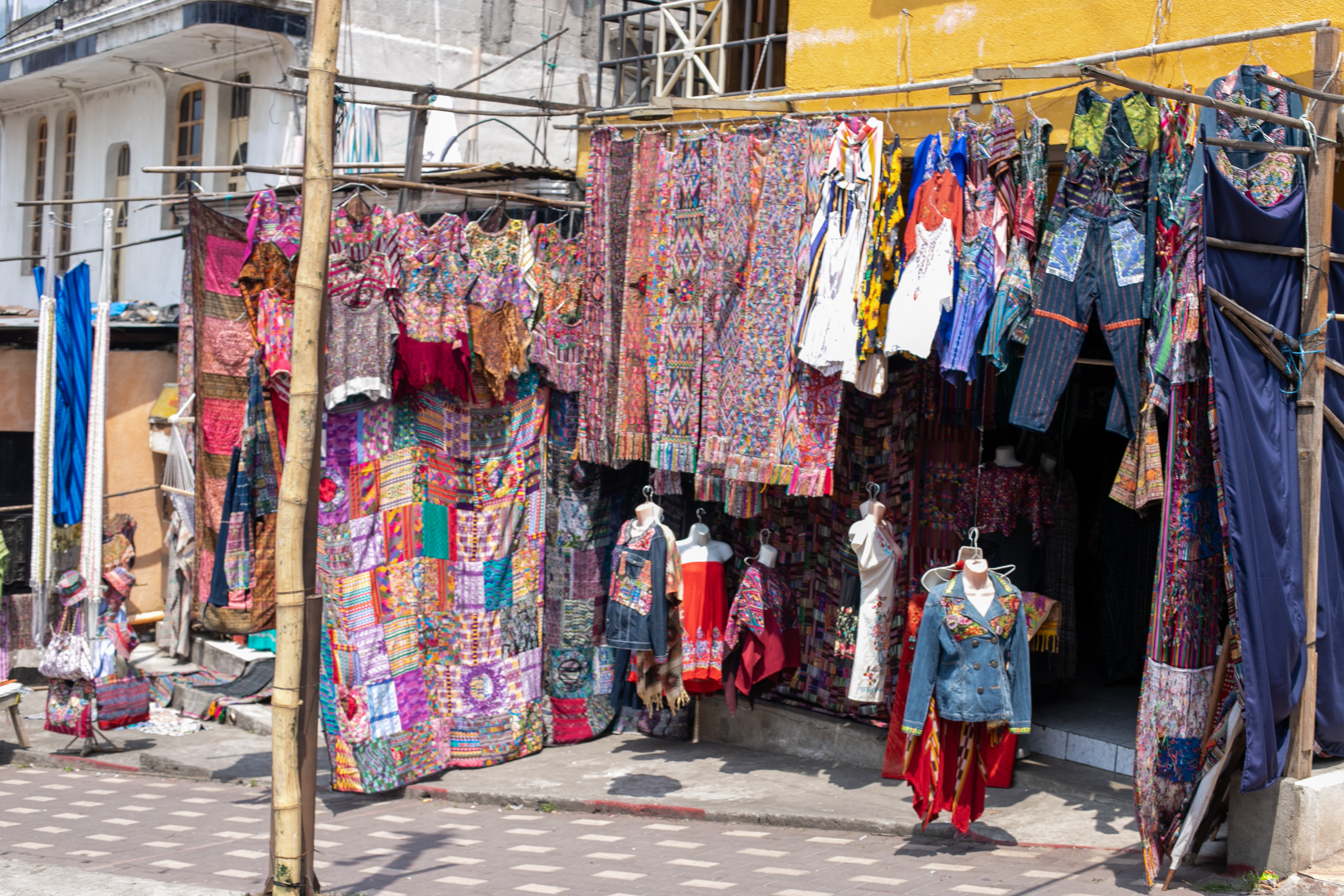
The Museo Lacustre, also known as the Museum of Underwater Maya Archaeology, is dedicated to the history of the Atitlan Region and Samabaj, the ancient Mayan site discovered at the bottom of the lake near Cerro de Oro.
There are three main exhibit halls at the museum. The first covers the origins of the Mayan people and villages around the lake. The second exhibit is dedicated to the geological origin and geography of Lake Atitlan and the surrounding areas.
In the remaining exhibit hall, visitors can see Mayan artifacts from the Preclassic to the Classic Period. The museum is located in downtown Panajachel within the grounds of the Hotel Posada Don Rodrigo.
The Atitlan Nature Reserve is just outside of town. You can walk there in 15 - 20 minutes, or take a short tu-tuk ride for a shorter trip. The Nature Reserve is a great place to spend a half or full day. The entrance ticket includes access to the hiking trails, butterfly pavilion, and beach area.
You can pay a bit extra to enjoy the ziplines, (or cables extremos), or book this 2 in 1 kayak & extreme zipline excursion. It is a great option for anyone looking to get out of the water as well as whizz through the trees.
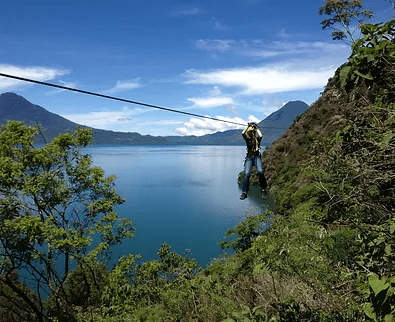
Panajachel is also the starting point for the famous Chichicastenango market and the lesser famous Solola local market. The Chichicastenango market is held each Sunday and Thursday, and the annual celebration of their patron Saint Tomas is each December 22.
It is easy enough to walk through the market and enjoy the sights, but if you want to meet some locals, explore the rich Mayan culture, and understand the meaning behind the textiles and customs, then this Chichicastenango market tour is the best option.
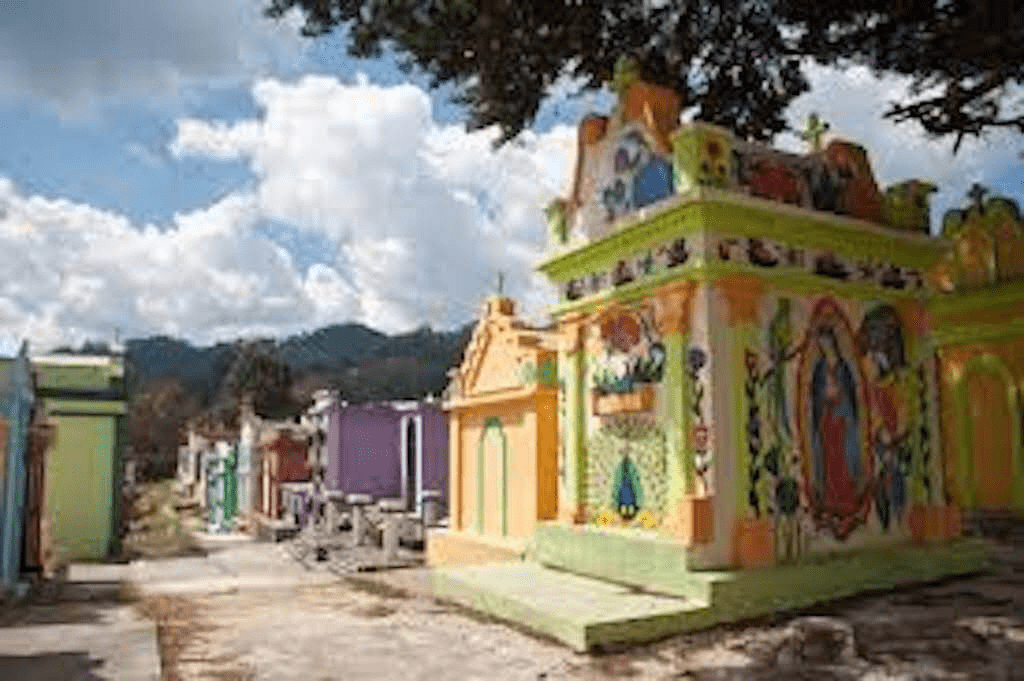
If you prefer to find hidden treasures not mentioned in guidebooks, then the Solola market is just the ticket. Few tourists are lucky enough to discover the unique charm of Solola market. As vibrant as the popular Chichicastenango market, Solola is bustling with local villagers every day of the week.
Hidden 7,000 ft in the mountains above Lake Atitlan, several Mayan tribes travel here daily to trade fruits, vegetables, fish, flowers, handicrafts, textiles, and even live animals. It is just a short ride up the mountain from Panajachel and is the perfect opportunity to ride a chicken bus. Explore on your own, or go with a local Mayan guide on this Solola market tour that also includes a visit to the Sacred Mayan caves.
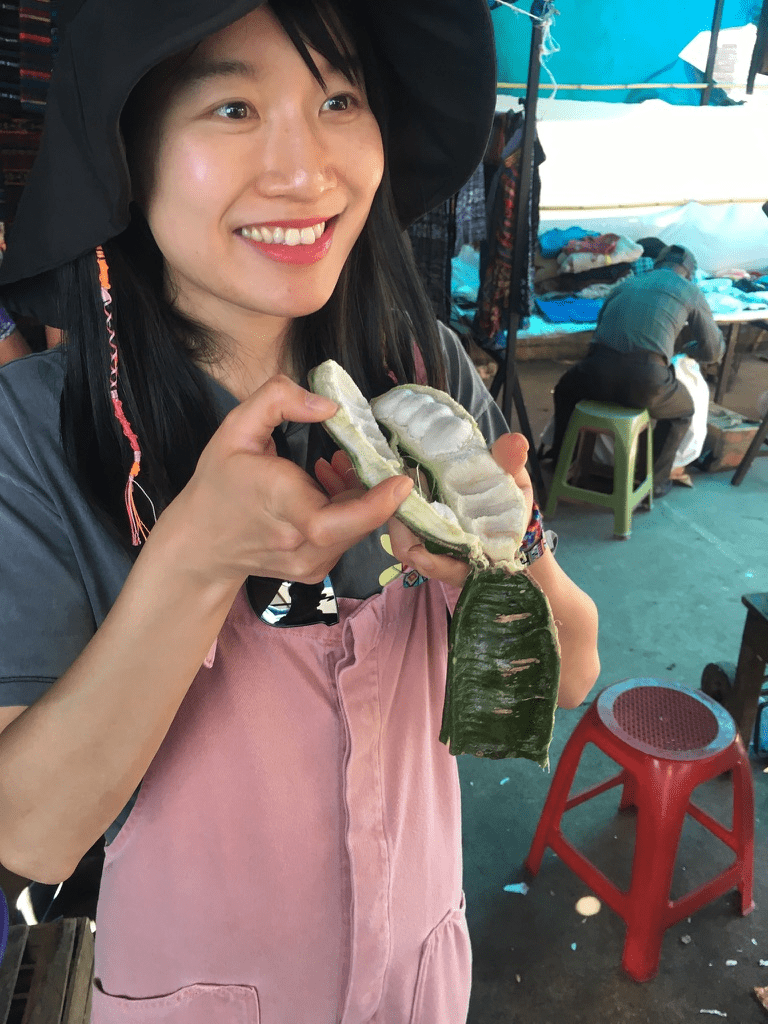
The Sacred Caves are also close by for those interested in learning about the ancient Mayan traditions and spirituality. This experience is way off the beaten path, and the only way to visit is with a local Mayan guide.
The caves have been used for centuries to perform Mayan rituals and are located 1200 ft. above Lake Atitlan. Mayans from the highland tribes travel hours to visit these holy places, and you will feel the energy and power as soon as you approach the entrance.
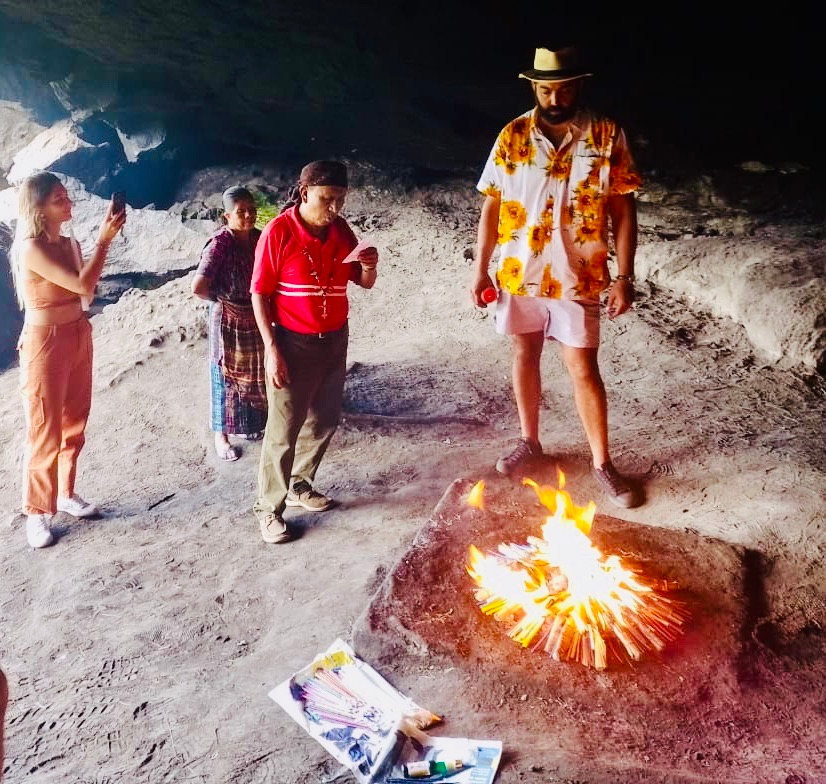
Amongst stunning panoramic views, your cultural guide will explain the significance of the ceremony as they lead you on your own personal meditation inspired by this ancient Mayan practice. Just like Mayan tradition, your guide will give you candles to hold and put your thoughts, prayers, and intentions into and eventually contribute to the fire.

If you would like to experience this ceremony with an official Mayan Shaman, we recommend this Mayan Fire Ceremony with Shaman tour.
TOP TIP FOR GETTING AROUND
With all these activities in and around Panajachel, there is still more to explore in the remaining seven villages. You will need to head to the local boat docks to visit the other villages. There are two main boat dock areas to catch a public boat ride to the other towns. One is Playa Publica, and is at the end of Calle Rancho Grande.
These boats only go to Santiago and back. The other one is Tzanjuyu (san-who-you). From here you can travel to Santa Catarina, San Antonio, and San Lucas on one route. Another will take you to Santa Cruz, Jaibalito, Tzununa, San Marcos, San Juan, and San Pedro la Laguna.
Santa Cruz is one of the smaller towns and is nestled between two large mountains with the village tucked between. The hotels and restaurants range from inexpensive hostels with shared dorms or private rooms to luxury hotels and holiday rentals.
Amigos de Santa Cruz non-profit is based here, and their Cafe Sabor Cruceńo is one of the best restaurants on the entire lake. This non-profit has been helping the local community by improving the quality of education and offering vocational training. Amigos offers beading, weaving, and cooking classes for visitors who want to delve deeper into the local arts and recipes.
The cafe is run by the graduates of their culinary arts program, and the cafe has the most amazing views of the entire lake and its surrounding volcanoes. It is a 10 - 15 minute walk up a steep road or a short and easy tuk-tuk ride.
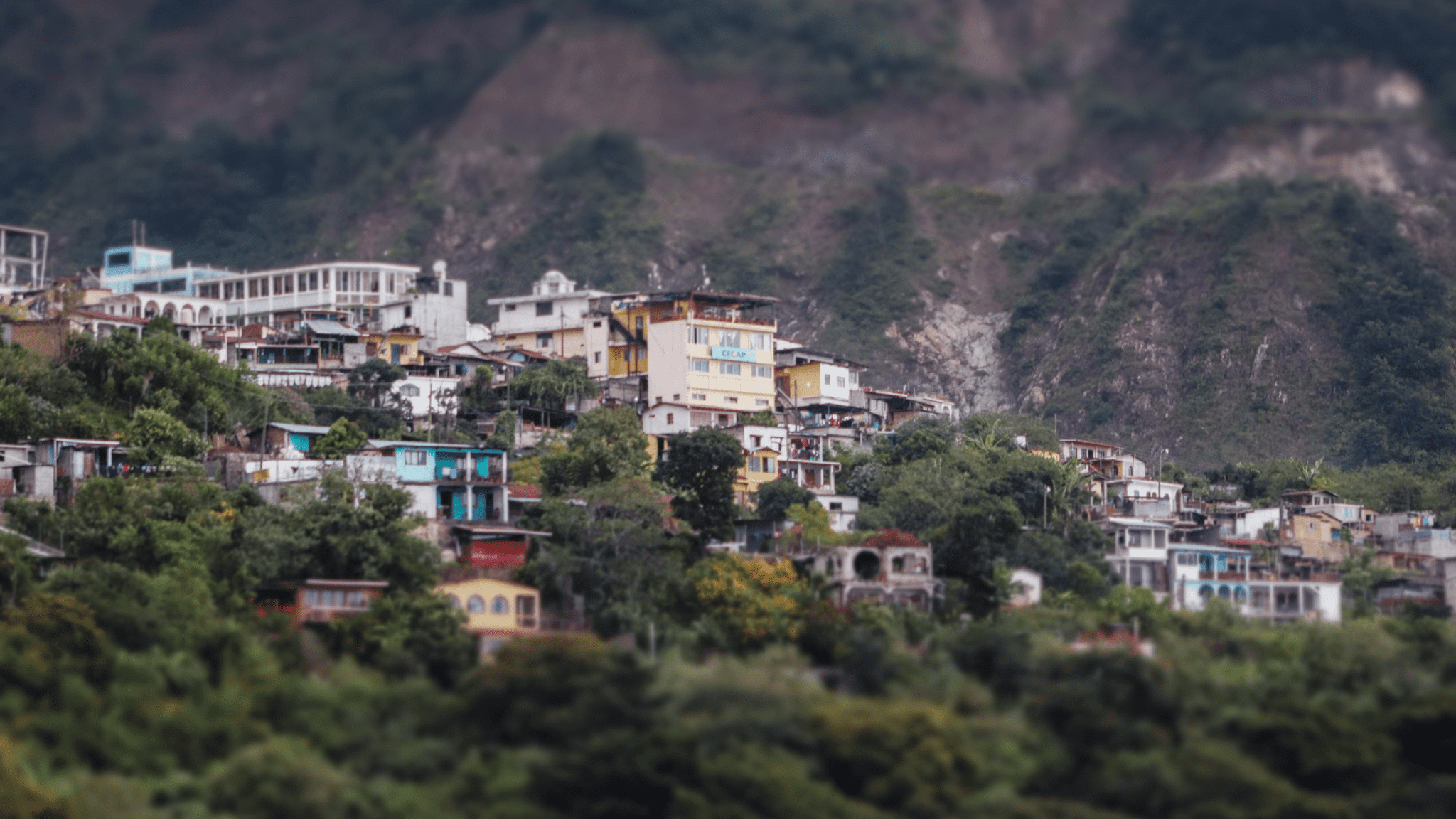
Our favorite way to enjoy Lake Atitlan and its dramatic scenery is in a kayak or on a paddleboard, and travel blogger Taylor Herperger agrees in her Travel Lemming blog.
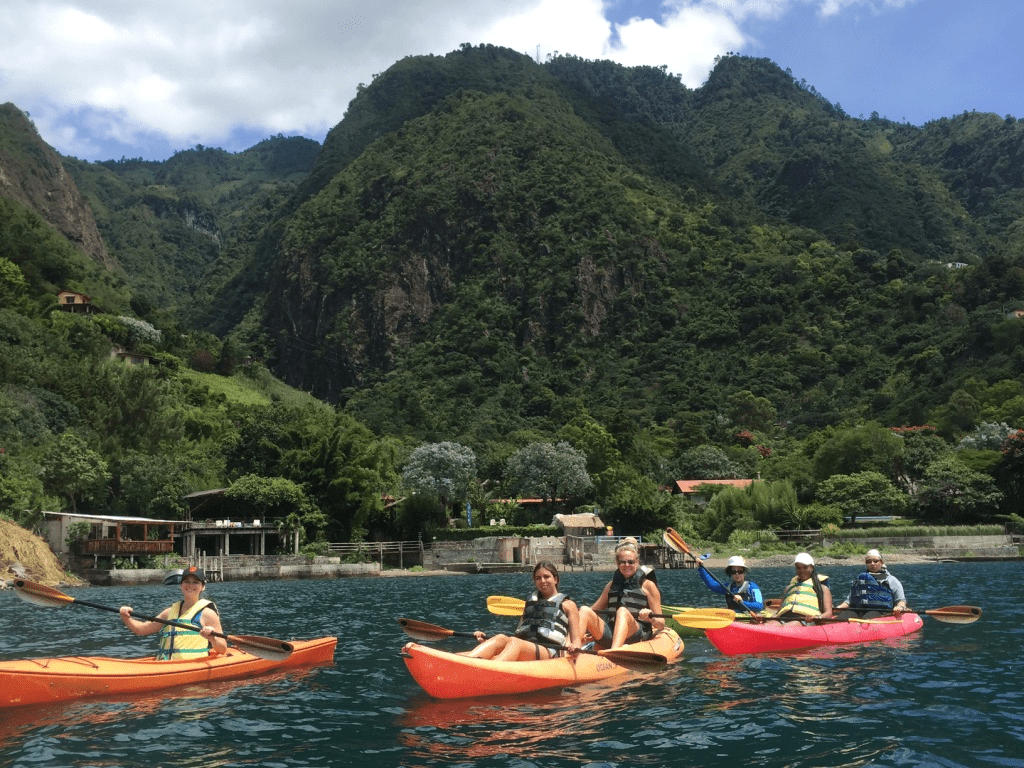
Mornings are the best time to paddle as the waters are calm, while the winds and waves pick up in the afternoon. One can paddle from place to place, or simply sit and relax to enjoy the panoramic views. Rentals are available from Kayak Guatemala in Santa Cruz la Laguna, as well as other agencies in San Pedro and Panajachel.
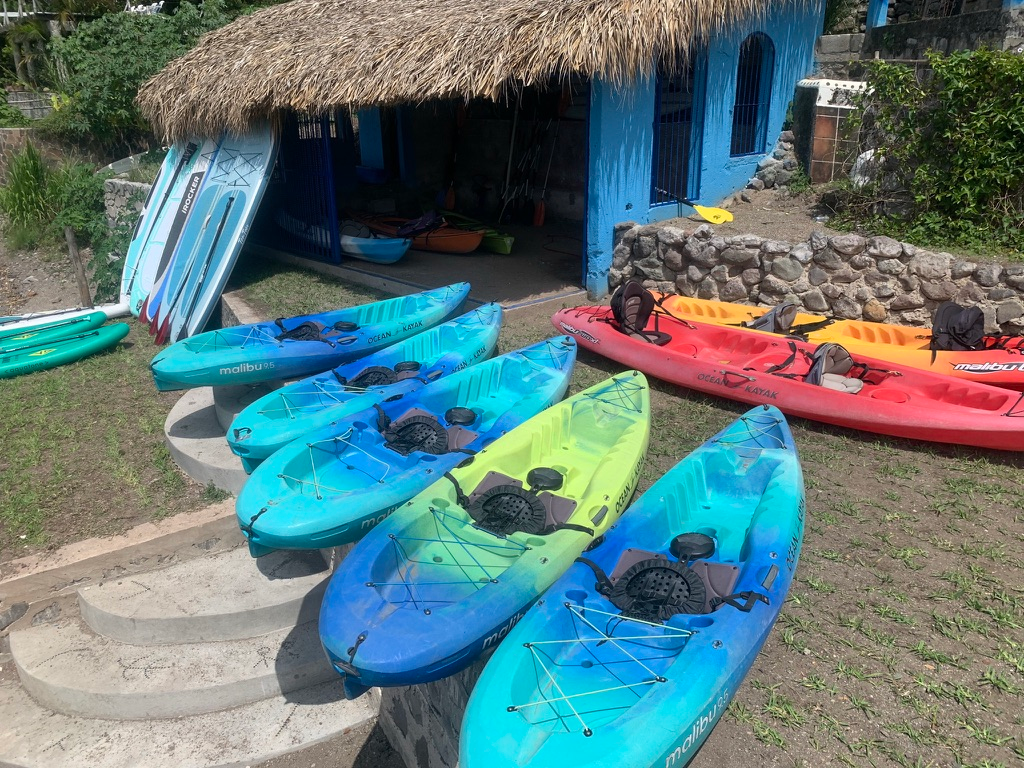
We recommend bringing a waterproof phone pouch with you while you’re on the water. This way, you can safely and securely bring your phone and snap some awesome pictures along the way.
Learning authentic Guatemalan recipes in a cooking class is great fun and an excellent family activity. Beading and weaving classes are great for those more artistically inclined.
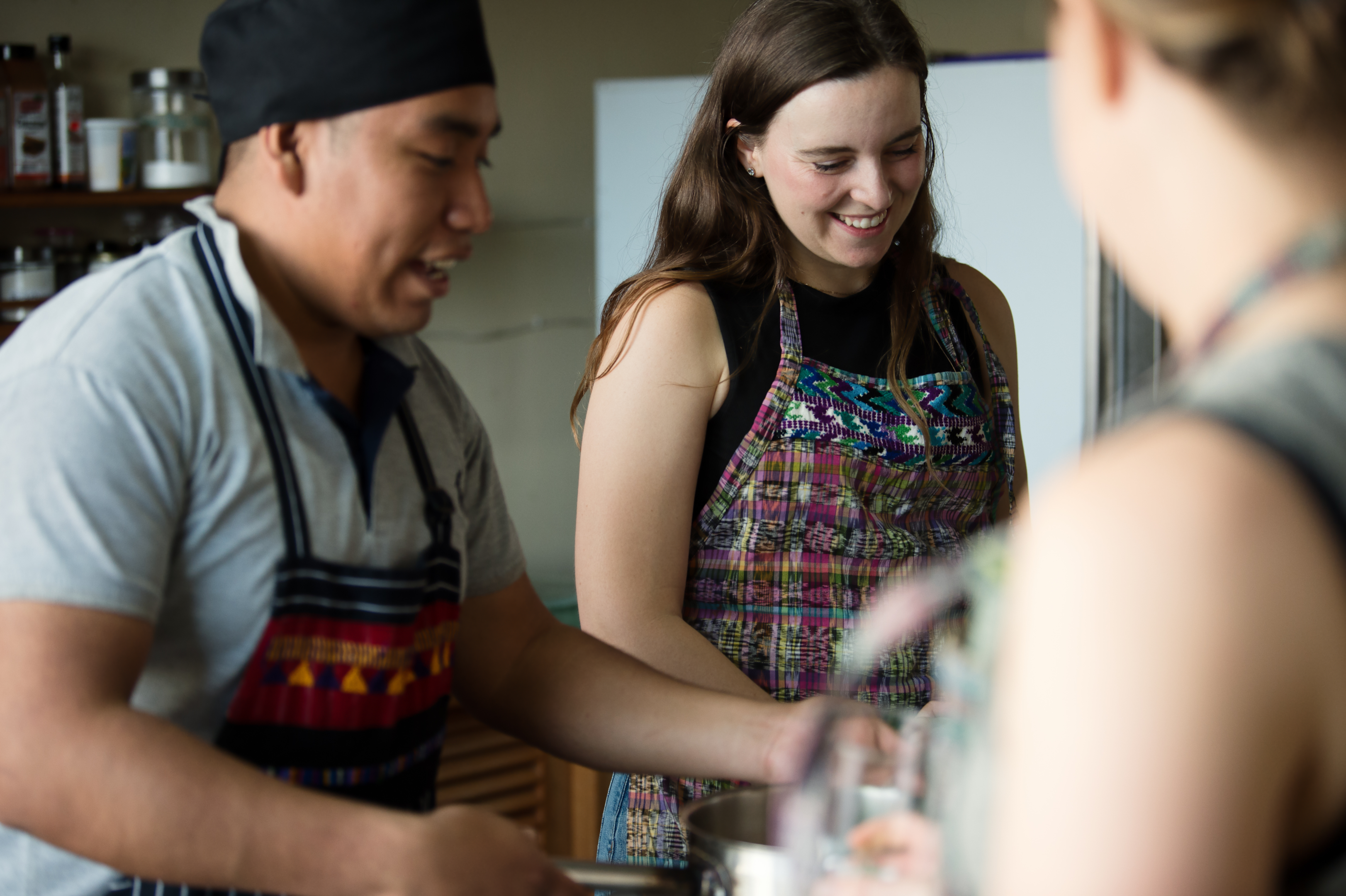
The best hiking trail around Lake Atitlan is between the small towns of Santa Cruz and Jaibalito. There is no road access on this part of the lake, so the hiking trails are the primary means of getting around. The trail is not marked but is easy to find, and there is a bit of elevation gain, but it is not steep.
Midway along the hike, you will pass by the famous hotel La Casa del Mundo, and panoramic views change with each turn of the trail. The best views are midway between the towns and offer spectacular views of the lake and volcanoes Toliman, Atitlan, and San Pedro.
This trail is one-third of the Lower Mayan trail, whilst, the remaining two-thirds continue on from Jaibalito to Tzununa. Plan on 30 - 45 minutes for the first segment, and 90 - 120 minutes for the second segment. You can hike in either direction, but it is worth your time to explore these small picturesque towns before moving on. Santa Cruz is a hidden gem that won't disappoint.
San Juan la Laguna is a unique town on the lake and is already on most people's Lake Atitlan itinerary. Twenty years ago, San Juan la Laguna was a traditional Mayan town, but today it feels like a tourist town decorated for every Instagram moment. The local community has developed many interesting ways to share their ancient Mayan traditions with visitors.
One can visit weaving cooperatives, art galleries, medicinal and curative herb gardens, coffee cooperatives, see lots of public murals, and brightly decorated streets. You can walk up the very steep road lined with shops, or some prefer to take a tuk-tuk to the top and walk down.
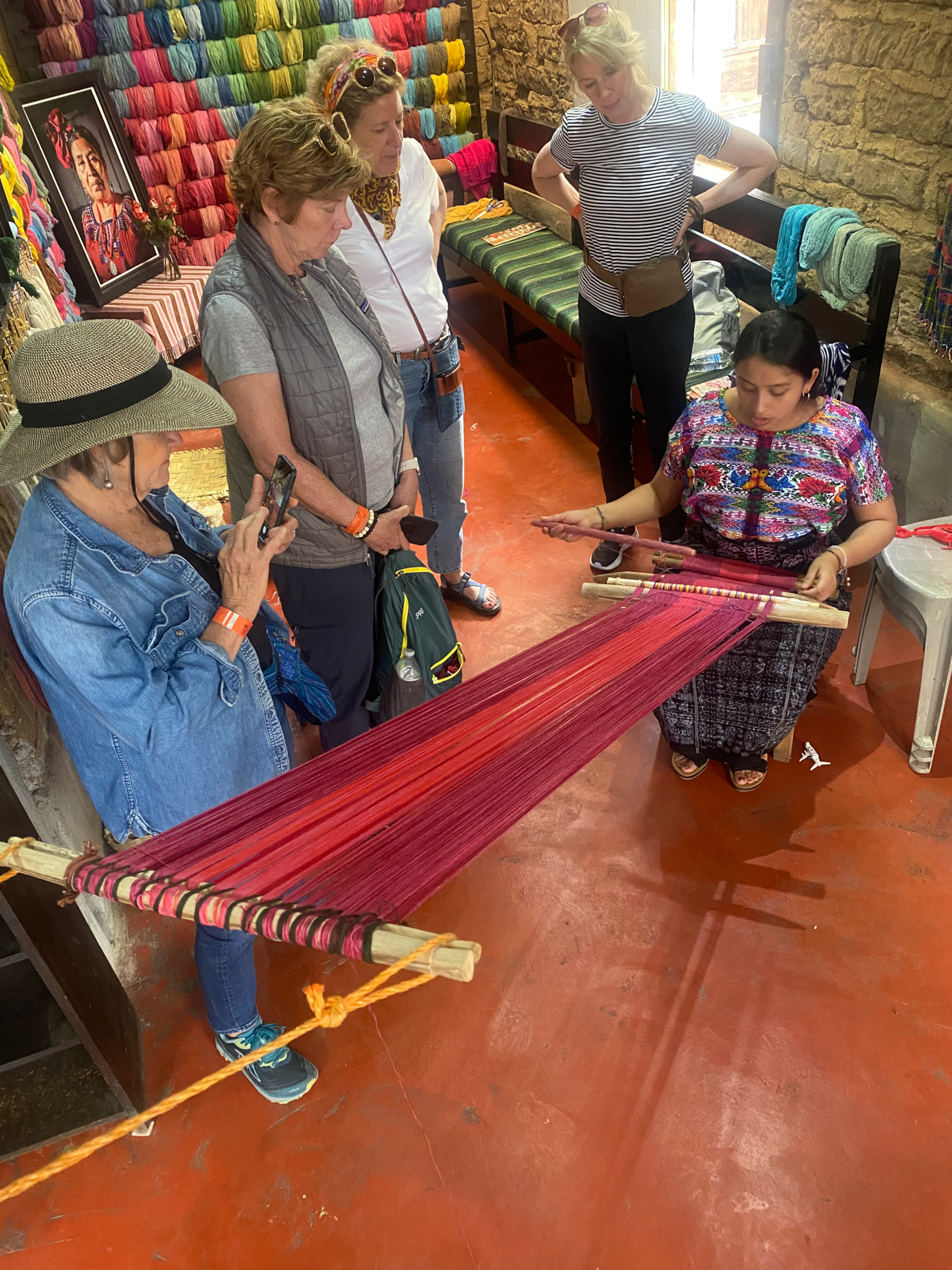
Eco-Hotel Mayachik is a small hotel on the outskirts of San Juan and is one of the few places you can stay in this small lake atitlan town. The restaurant is vegetarian and very tasty. This Eco-hotel uses water and energy-saving systems to minimize its carbon footprint.
The Indian Nose Peak on the west side of Lake Atitlan is a great hike that offers spectacular views of Lake Atitlan, its three volcanoes, as well as three additional volcanoes to the east. The hike can start and end in San Juan la Laguna, or via the shorter route from Santa Clara.
The San Juan route is around a 2-hour hike to the summit, while the Santa Clara route is 30 - 45 minutes, however, hiking times vary greatly depending on one's physical condition. It is a popular place to watch the sunrise, but other times of the day are just as nice.

San Pedro la Laguna has the reputation of being a backpacker town, and while there is some truth to it, there are also plenty of mid-range and expensive hotels offering private rooms. San Pedro is home to the largest number of Spanish language schools that offer inexpensive classes and homestays. This is also the starting point for the San Pedro volcano hike.
There is a small Israeli community, and a Chabad for travelers, as well as the Jewish hostel Zoola. You even see some restaurant menus written in Hebrew.
Summiting the San Pedro volcano is the most popular of Lake Atitlan's three volcanoes, and also the shortest. There is an established park entrance, well-maintained trails, and an abundance of trained guides to help show the way.
Average hike times are 4 hours to the summit, and 3 hours to return, however, hiking times vary greatly depending on one's physical condition. Some days are clear and offer spectacular views of Lake Atitlan and towards the Pacific Ocean on the other side. On other days clouds ring the top third of the volcano, which makes for nice cool temperatures but no views.
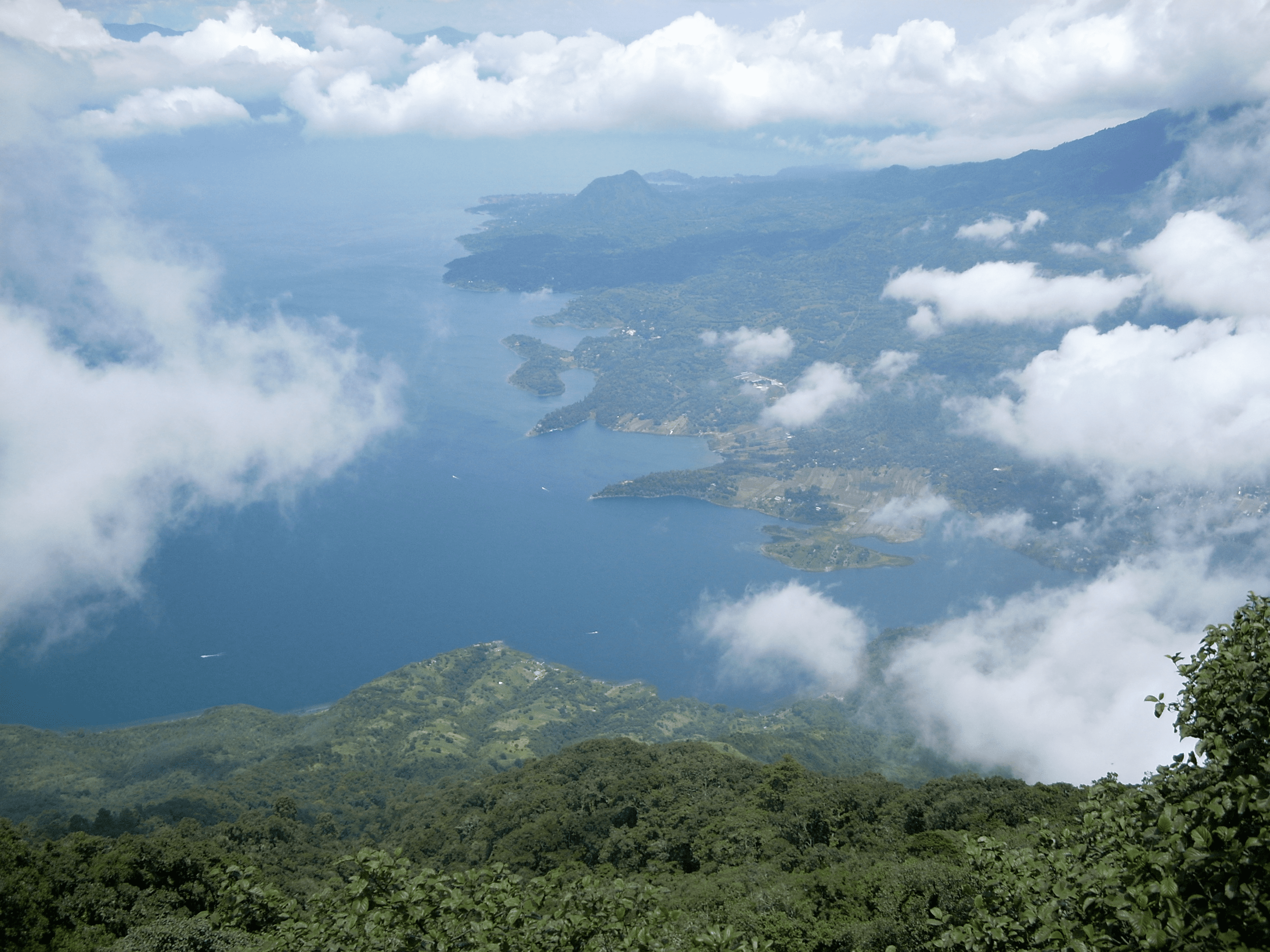
San Marcos is a haven of serenity and spiritual exploration. This enchanting village is renowned for its holistic and wellness-focused atmosphere, making it a beloved destination for those seeking inner peace and rejuvenation. The nurturing and open-minded community welcomes travelers with open arms, creating a supportive space for self-discovery and personal growth.
If you are more in the mood to relax, swim, or jump off a 12-meter platform, you can visit the Cerro Tzankujil nature reserve.
Lush Atitlan is a small eco-boutique hotel full of charm and interesting architecture. Each room and suite is uniquely different Parts of it are built into a hillside, and each room is different. The windows, lamps, and tables use recycled glass and tiles to create unique works of art. La Terraza restaurant offers fresh locally sourced meals set in the lush gardens of the hotel.
You'll find an array of yoga studios, meditation centers, and holistic healing practices, all set amidst breathtaking natural beauty. There are notice boards around the village showing all the possibilities. A short list of retreat centers includes La Paz, Yoga Forest, Taiji Tao Temple, The Sanctuary, Eagles Nest, Sacred Paths Yoga, Eden, and others. Many of these offer drop-in yoga classes, whilst some are very exclusive and require multi-day commitments.
Santiago is the largest town on Lake Atitlan. It is also the most traditional of the Tzutuhil towns, and it is common to see men wearing traditional outfits.

The central market is interesting to visit, as it receives produce from many villages far from Lake Atitlan. You will also find the best selection of fish from Lake Atitlan and the ocean, as the fishing is best in the Bay of Santiago.
This town is home to a historic church that dates to 1527 and is still active today, a lovely park, and the famous Maximon idol. You can ask a local guide to take you to his shrine if you are curious.
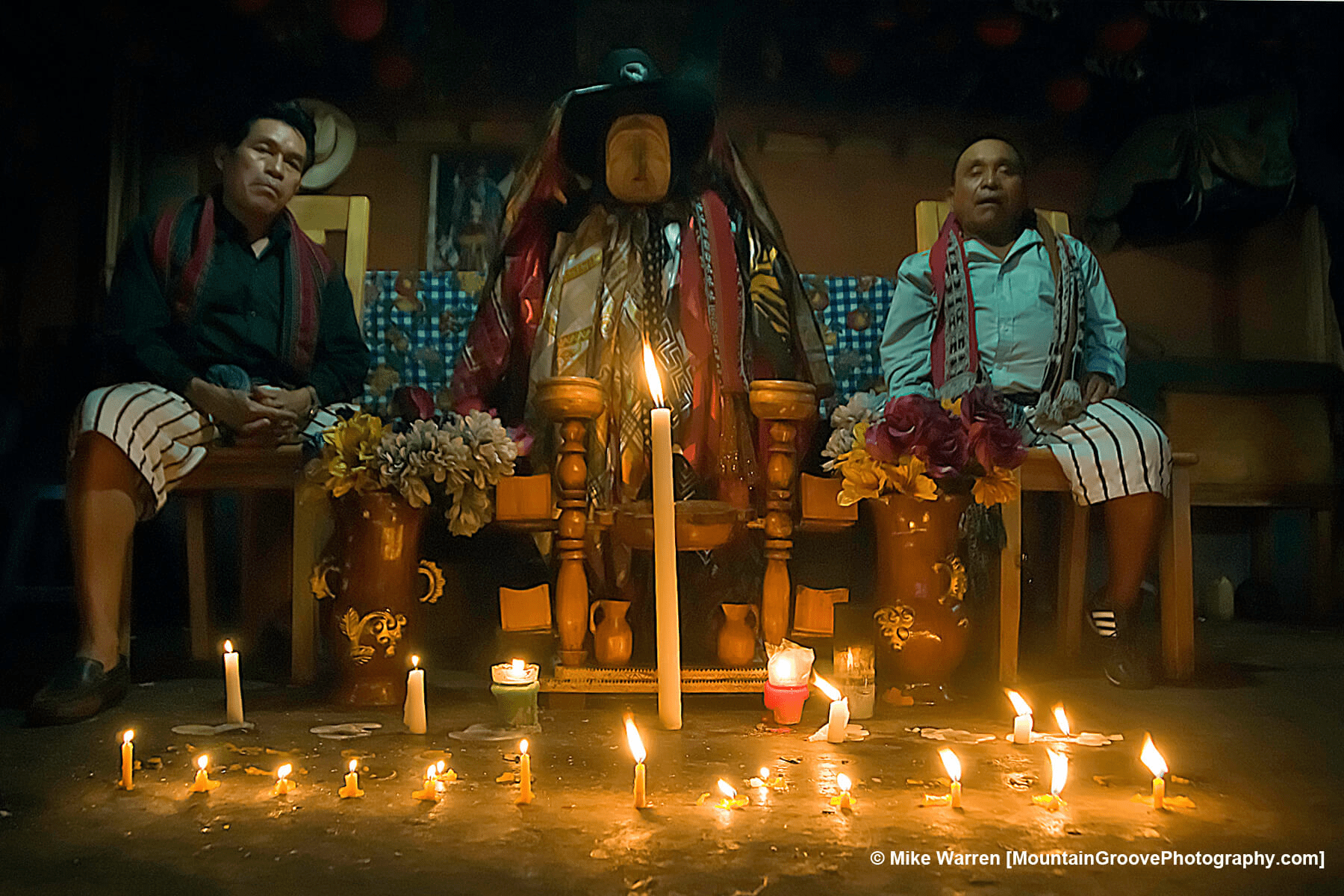
Starting in Panajachel, you can visit Santa Catarina and San Antonio Palopo in one easy day. Each is a small town that can be explored in an hour or so. You can go by road, either in a chicken bus, by local transports called fletes, or by public or private boat.
We recommend visiting the hot springs near Santa Catarina, as well as the pottery studios in San Antonio Palopo. Santa Catarina created a project to paint all the houses and businesses in the colors of their textiles, and the result is a colorful town of blues, greens, yellows, and reds.
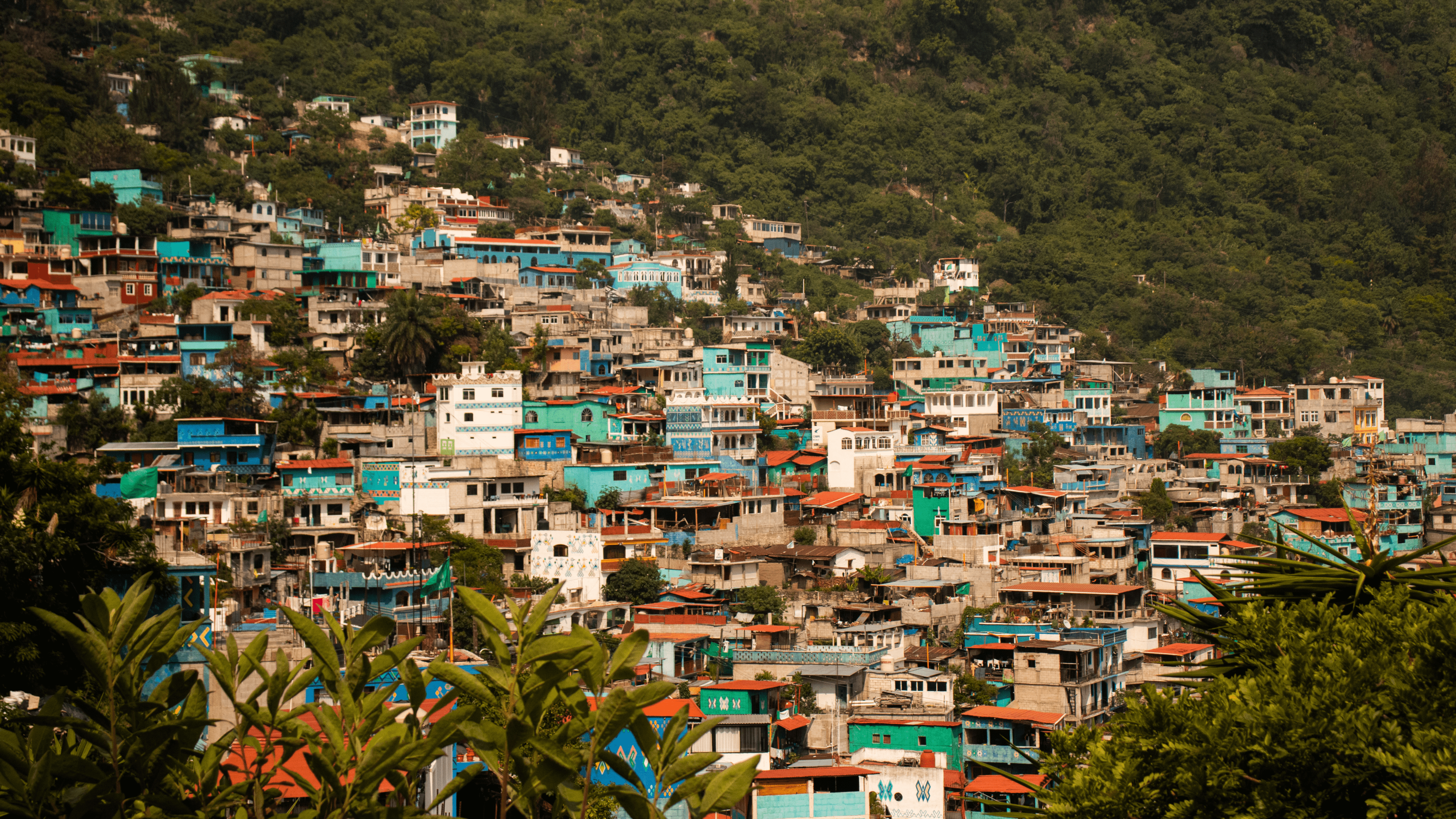
If you are planning a trip to Lake Atitlan, here are some tips to help you make the most of your visit:
Choose the right time to visit. The best time to visit Lake Atitlan is during the dry season, which runs from November to April. During this time, the weather is warm and sunny, and the lake is calm and clear.
Where to stay. There are many different places to stay in Lake Atitlan, from budget hostels to luxury hotels. If you are looking for a place to stay with a great view of the lake, consider staying in one of the villages that surround the lake.
What to do. There are many things to do in Lake Atitlan, including hiking, biking, swimming, kayaking, and fishing. You can also visit the many Mayan ruins that are located in the area.
How to get around. The best way to get around Lake Atitlan is by boat. There are many boat tours that you can take, or you can rent a boat and explore the lake on your own.
What to pack. When packing for your trip to Lake Atitlan, be sure to pack comfortable shoes, sunscreen, a hat, and a swimsuit. You may also want to pack a raincoat, as it can rain at any time of year.
Here are some additional tips for traveling to Lake Atitlan:
Be aware of your surroundings. Lake Atitlan is a safe place to visit, but it is always important to be aware of your surroundings, especially at night.
Drink bottled water. The tap water in Lake Atitlan is not safe to drink.
Use sunscreen. The sun can be strong at Lake Atitlan, so be sure to use sunscreen to protect your skin.
Respect the local culture. Lake Atitlan is a beautiful place with a rich culture. Be sure to respect the local culture and customs.
By following these tips, you can make the most of your trip to Lake Atitlan.
The fastest and easiest way to visit the Lake Atitlan towns is by boat. There are public boats that run between most of the towns, or one can hire a private boat to take you anywhere at your own leisure. As far as driving, some towns are connected by roads, others not at all.

It's an easy drive between Panjachel, Santa Catarina, and San Antonio. On the west side of the lake, the road between San Marcos, San Juan, and San Pedro is in good condition. And if you are approaching from the south, a road connects San Lucas Tolliman and Santiago.
It is easy to visit two to three villages for an easy day trip, but it is helpful to group those that are close by to make your experience more enjoyable. Starting in Panajachel, you can visit Santa Catarina and San Antonio Palopo in one easy day.
If you start in Panajachel and go the other direction, you can explore Solola and its local market; San Jorge, known for the sacred caves and miradors that offer amazing views of Lake Atitlán and the surrounding volcanoes; and Conception and its ancient Catholic church.
On the west side of Lake Atitlán San Marcos, San Juan, and San Pedro are within close proximity to each other. The popular hiking trail connecting Santa Cruz, Jaibalito, Tzununa, and San Marcos offers four villages in one day trip.
If you are short on time, it is very manageable to visit Lake Atitlan from Antigua in one day. We suggest an early start to make the most of one day visiting Lake Atitlan. Shared tourist shuttles depart Antigua daily at 5:30 and 8:00am and return to Antigua at 6:30pm. Taxis and private drivers offer more flexibility and comfort, albeit at a higher price.
Lake Atitlan is located in the highlands area of Guatemala, which means that the weather is near perfect year-round. The primary difference is the dry season, which runs from November to April; and the rainy season which is from May to October. Many visitors prefer the dry season months, while most residents prefer the rainy season. The rain commonly comes in the late afternoon to early evening, so activities are rarely interrupted.
Kayak Guatemala is Lake Atitlan’s #1 base camp for exploration and adventure, offering activities like epic volcano hikes, family kayak tours, cooking classes, and village-to-village boat and walking tours. We employ and upskill underprivileged local people, plus a portion of our profits goes towards an NGO that works hard to alleviate poverty in Lake Atitlan.
For more help with planning your trip to Lake Atitlan, check out our "Top Tours & Things To Do In Lake Atitlan" guide.
